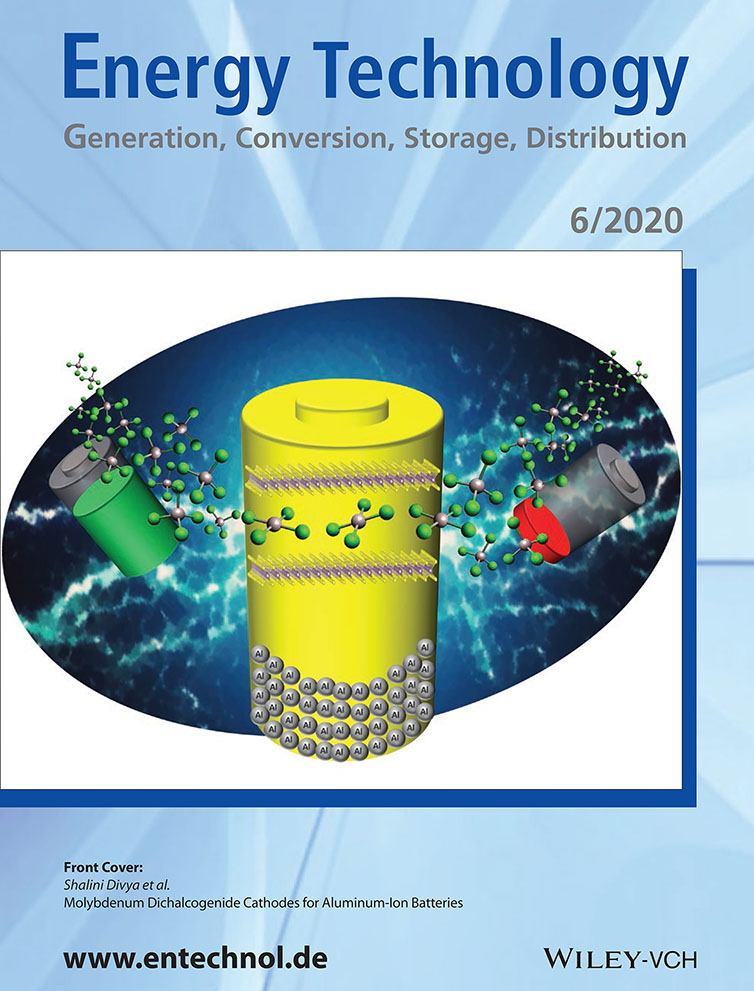Molybdenum Dichalcogenide Cathodes for Aluminum-Ion Batteries
Abstract
Many successful battery electrodes are based on 2D-layered materials. Aluminum-ion batteries are studied using molybdenum dichalcogenides: MoS2, MoSe2, and MoSSe as active cathode materials. The batteries show clear discharge voltage plateaus in the ranges 1.6–1.4 V for MoS2 and MoSe2, and 0.6–0.5 V for MoSSe. MoS2 and MoSe2 have similar crystal structures; interestingly, it is found that MoSe2 performed better than MoS2. MoSSe exhibits a higher specific capacity over MoS2 and MoSe2, but the energy density is lower than MoSe2 at a current rate of 40 mA g−1. MoSe2 cells record a discharge capacity of ≈110 mAh g−1 with an average potential in the range of 2.0–1.8 V and 1.5–0.8 V during discharge. The cells are stable at 100 mA g−1 for over 200 cycles with 90% coulombic efficiency.
Conflict of Interest
The authors declare no conflict of interest.




